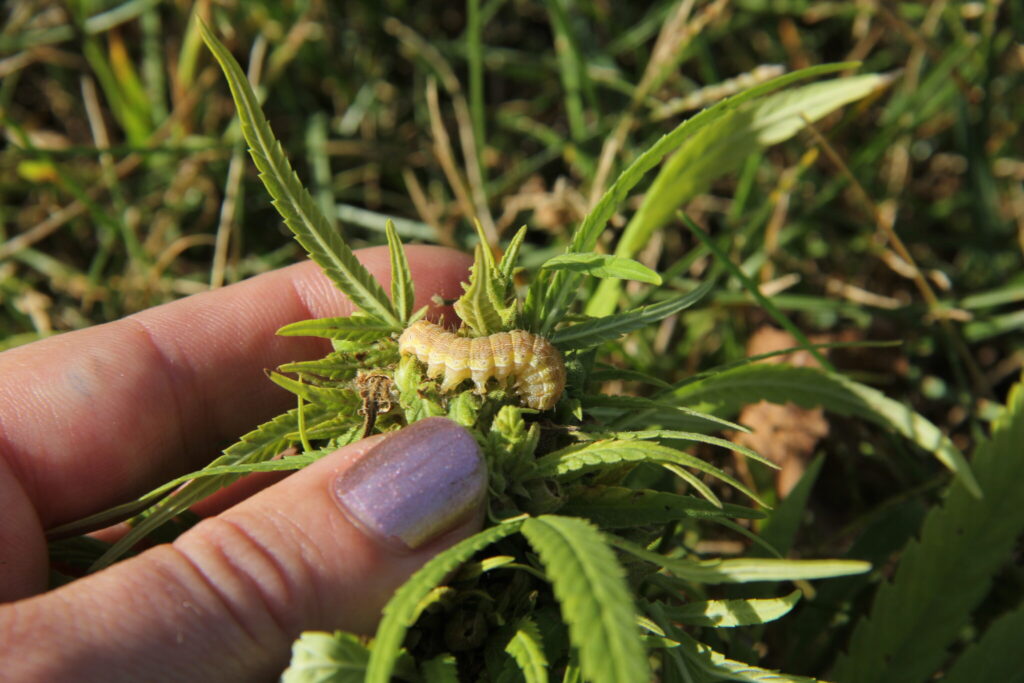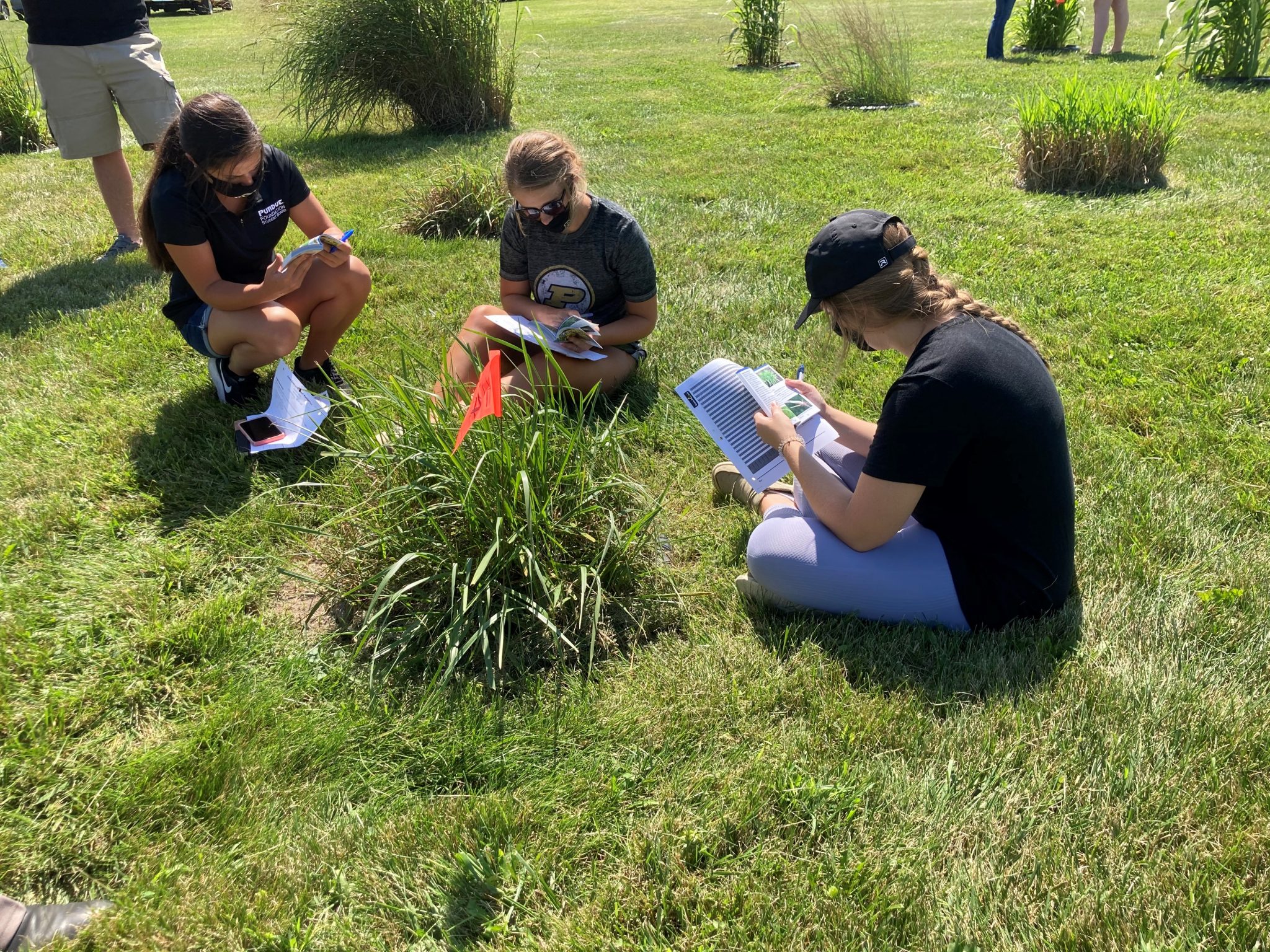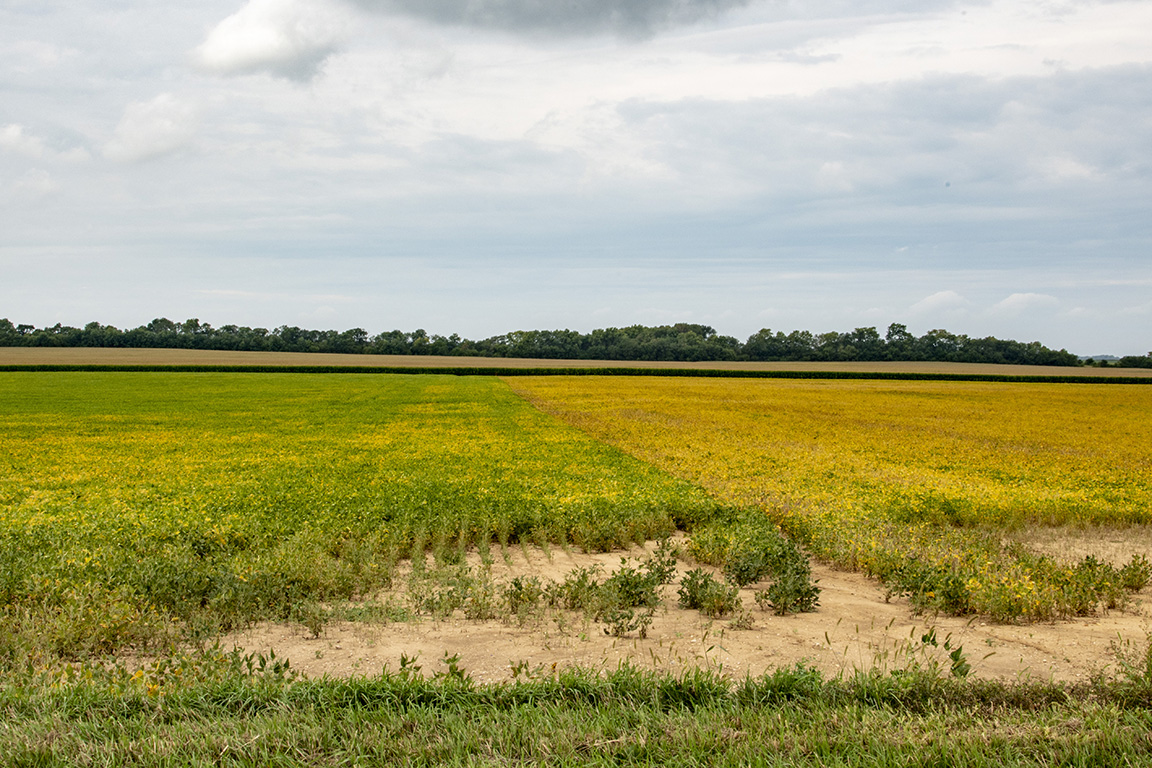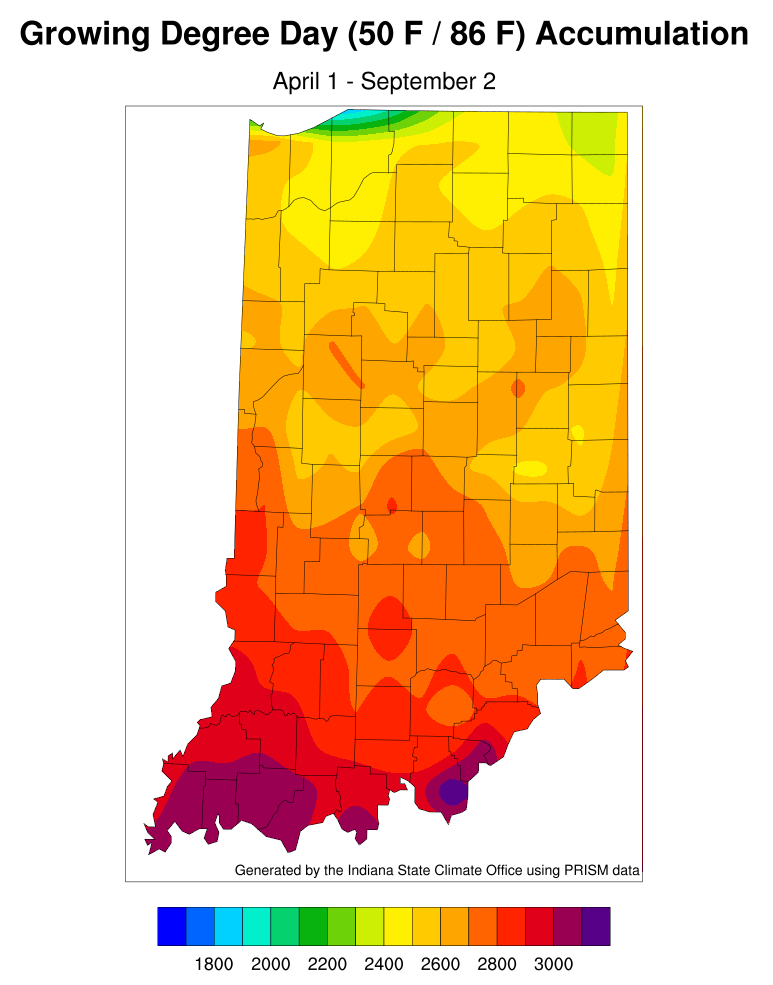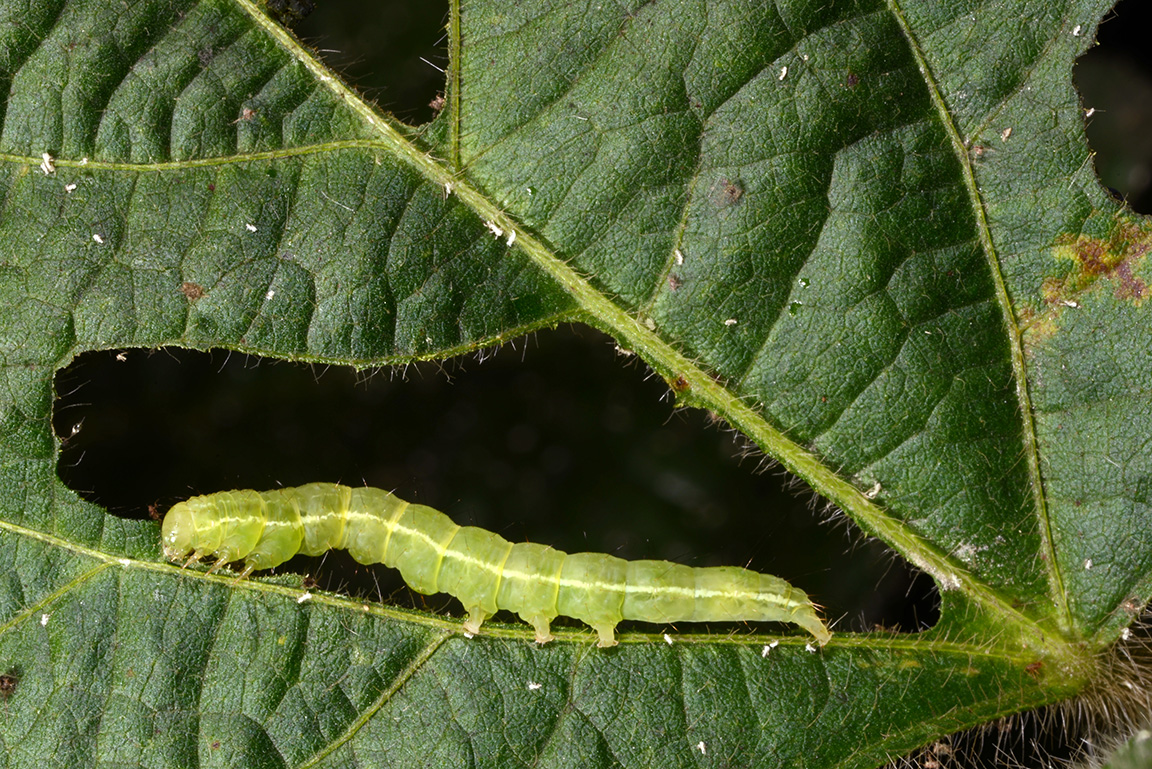This is a wonderful time of the year in the Hoosier state, as we drive through the countryside, we are greeted with the pleasing sight of several colorful butterfly species gliding across and roads, near puddles of water, or on fall flowering plants. Many of these beauties originated from larvae that likely fed on soybean or alfalfa. However, it is rare for any of these species to cause significant yield losses from defoliation. Below is a listing, with pictures, of some of the common butterflies and their caterpillars this time of year. Although you will find some of these feeding in crops, none are pests.



